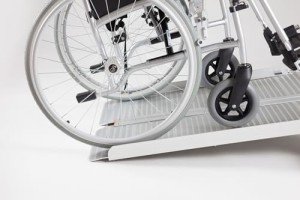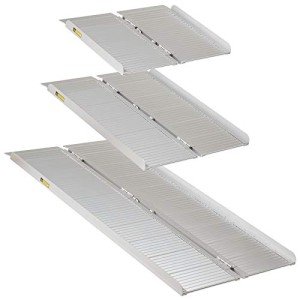Browsing through different surfaces, particularly for those with mobility difficulties, can typically be daunting. Steps and curbs become barriers, complicating basic jobs like visiting friends or running errands. Fortunately, portable ramps are here to supply a practical option. In this blog site post, we will delve into the world of portable ramps for steps, exploring their types, benefits, and important factors to consider for use.
Portable ramps are lightweight, easy-to-transport devices developed to offer access over steps, curbs, and other barriers. They produce a progressive slope, allowing people using wheelchairs, scooters, or walkers to travel securely and conveniently. These ramps come in different sizes, styles, and products, making it necessary to select one that fits specific needs.

| Kind of Ramp | Description | Best Use Case |
|---|---|---|
| Folding Ramps | Ramps that can be folded for simple storage and transportation. | Home usage, short distances |
| Roll-Up Ramps | Ramps that roll up for convenience, frequently made from durable materials. | Travel and outside usage |
| Strong Ramps | Non-foldable ramps made from heavy-duty materials, providing a consistent incline. | Permanent setups |
| Limit Ramps | Brief ramps developed particularly for doorways and little steps. | Doorway usage, small shifts |
| Multi-Fold Ramps | Ramps that fold in multiple ways for compact storage and versatility. | Different scenarios, consisting of lorries |
Improved Mobility: One of the main benefits of portable ramps is that they improve mobility for people who face difficulties browsing steps. Ramps offer an alternative to lifting or carrying mobility devices up and down stairs.
Easy to Use: Portable ramps are typically developed for quick set-up and takedown, making them easy to use for people and caretakers alike.
Flexibility: Many portable ramps can be utilized in a variety of situations, from homes to public areas, and can accommodate various kinds of mobility devices.
Cost-efficient: Compared to permanent ramp setups, portable ramps are usually a more cost-effective option. They permit individuals to keep self-reliance without devoting to structural modifications.
Transportation-Friendly: The lightweight nature and retractable styles of portable ramps guarantee they can fit in most vehicles, making them perfect for on-the-go users.
When choosing a portable ramp, several aspects require to be considered:
| Factor | Description |
|---|---|
| Weight Capacity | Make sure the ramp can support the weight of the user and their mobility device. |
| Length and Height | Match the ramp length to the height it needs to cover, ensuring a safe slope. |
| Product | Choose ramps made from durable products like aluminum for longevity. |
| Portability | Evaluate the ease with which the ramp can be moved and kept. |
| Surface Type | Think about ramps with slip-resistant surfaces for safety throughout use. |
| Guarantee and Support | Inspect for manufacturer service warranties and customer assistance choices. |
Before acquiring a portable ramp, it's vital to measure both the increase (the vertical height of the steps) and the length (the horizontal distance the ramp will cover). The perfect slope ratio is 1:12, meaning for every inch of rise, there should be at least 12 inches of ramp go to ensure a mild incline.
A1: Yes, numerous portable ramps are designed for both indoor and outside usage. Guarantee that the ramp has weather-resistant products or coatings if you prepare to utilize it outside frequently.
A2: Some portable ramps feature adjustable heights or folding mechanisms, enabling for customization based upon the specific increase of the steps or limit.
A3: Regularly check your ramp for signs of wear, tidy it as required, and shop it in a safe, dry location when not in use to lengthen its life expectancy.
A4: Portable ramps can be purchased through medical supply shops, home improvement retailers, and online marketplaces. Constantly examine user reviews and requirements before buying.
A5: While it is possible to develop a ramp, it is suggested to buy a professionally designed ramp that fulfills security standards to ensure reliability and compliance with local policies.
Portable ramps are important tools that greatly enhance the mobility and independence of individuals who deal with barriers due to stairs and unequal surface areas. With numerous designs and products readily available, it is important to comprehend the specific needs of the user before buying. By prioritizing security, convenience, and sturdiness, portable ramps can make everyday activities accessible for everyone. Whether utilized in a home setting or on the go, a portable ramp can be a simple yet powerful solution for breaking down barriers in mobility.

Məlumat tapılmadı!
